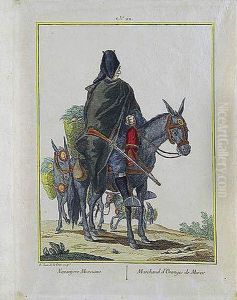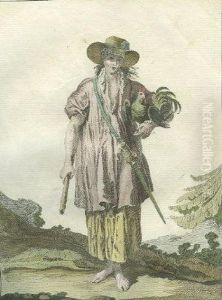Juan De La Cruz Cano Paintings
Juan de la Cruz Cano y Olmedilla was a Spanish cartographer and engraver born in the year 1734 in the city of Granada, Spain. He is particularly known for his detailed maps and engravings that captured the geographic intricacies of the Americas during the 18th century, a period when European powers were intensely interested in the New World.
Cruz Cano y Olmedilla received his early education in Spain and went on to further his studies in Paris, where he developed his skills in cartography and engraving. His proficiency and talent became evident through his work, which combined both artistic merit and scientific accuracy.
One of his most significant contributions to cartography was the 'Mapa geográfico de América Meridional' (Geographic Map of South America), published in 1775. This map was remarkable for its size, detail, and accuracy at the time of its creation and was the result of extensive research. It was commissioned by the Spanish Crown, which sought to have a comprehensive and updated representation of its territories in South America, especially due to the growing interest and territorial disputes arising from colonization by European powers.
Throughout his career, Juan de la Cruz Cano y Olmedilla held various positions, including being appointed as the director of the Royal Chalcography of Madrid. His work was widely respected, and he was recognized by various scientific institutions. Despite his achievements, Cruz Cano y Olmedilla's later life was marred by controversy and misfortune. He faced accusations of mismanagement and was even imprisoned for a period.
Cruz Cano y Olmedilla died in 1790. Although he faced challenges towards the end of his life, his maps and engravings remain as a testament to his skill and are still valued by historians and collectors for their historical significance and craftsmanship. His contributions to the field of cartography are considered important for the understanding of South American geography during the colonial era.

